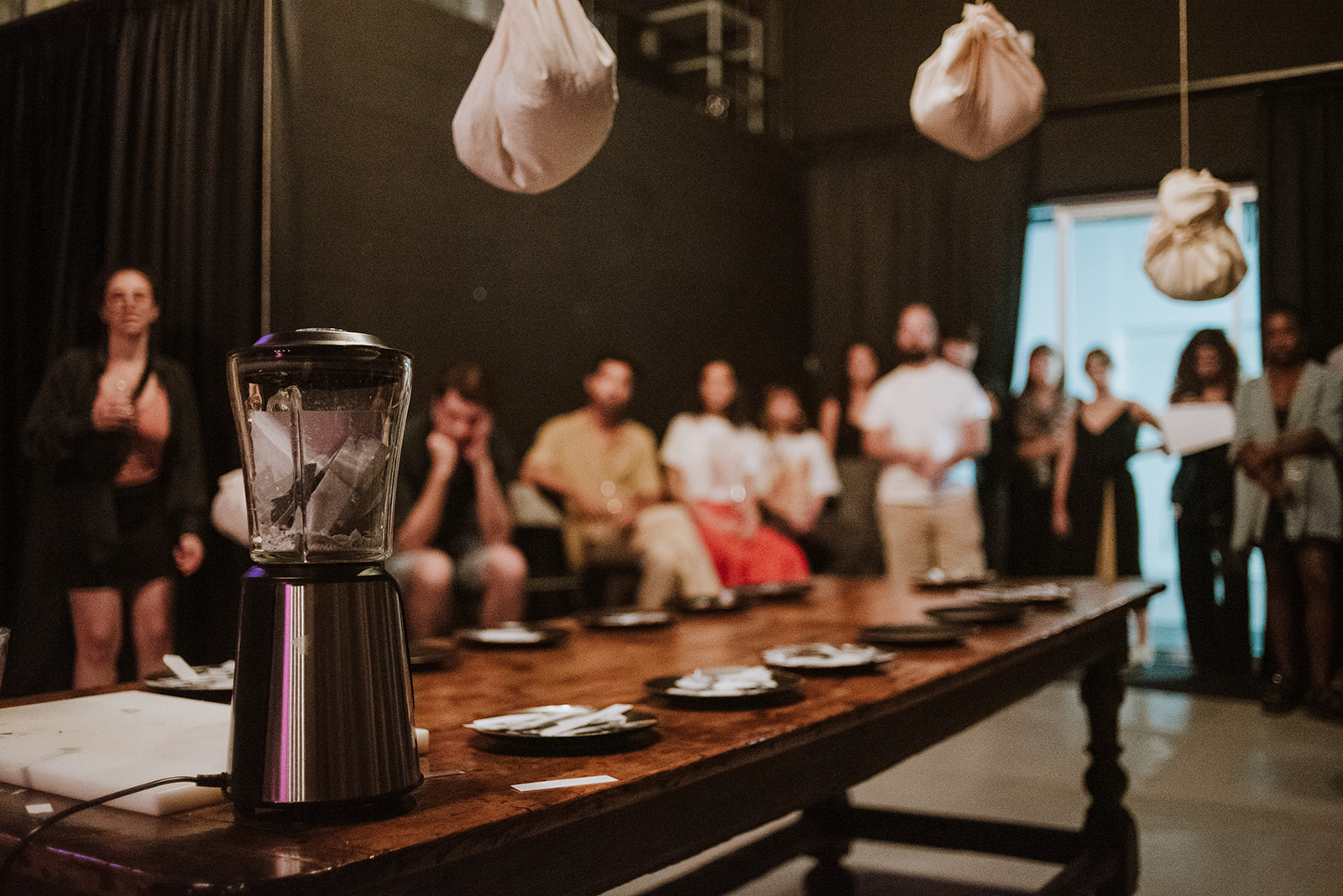
Lay it on the table
FIRST DAY
The exchange processes that take place in a white cube create many restrictions in the way we see, experience and feel art. Through the framework of a shared meal, with this project we wanted to explore alternative conceptions and definitions of what makes an exhibition space or a stage. So we asked ourselves: what happens when the work of art is not shown on four walls, but in the space above and around a table?
9th October 2023
— curators
Alexia Alexandropolous
Inês Nêves
Lígia Fernandes
Nicole Sánchez
— project location
Manja (Lisbon)
— co-production
Manja (Lisbon)
— partner entities
Maria Rita Arnaut
Eduardo Freitas' gastronomic performance "Preto no Branco" approaches the table as a biographical space where the artist brings up both physical and emotional issues. Cooking traditional dishes from Brazil, presented in two acts, the artist - who has both black and white origins - explores the dynamics surrounding his identity and cultural heritage. During the performance, Eduardo shares stories of his ancestors and their political implications: a brave act of vulnerability, as he allows us to absorb his identity by eating food in the form of his body and listening to his intimate stories. Although it can be difficult to fully understand someone else's experience, Eduardo makes it accessible by activating our senses and inviting us to share the table, making us an integral part of the performance.

 .
. 









Eduardo Freitas was born in Ponta Grossa - PR, Brazil (1990). In 2017 he decided to move to another country, hoping to find new stimuli for his artistic production. He has lived in Portugal ever since. The artist, who in his childhood and youth, alongside his artistic studies, lived and worked in the restaurant industry, brings commensality into his creative work and presents the act of eating and cooking as artistic actions. She also investigates the concepts of matter, hybrid languages, the body and tradition, in a strategy that crosses her personal experience with the memories, stories and places of the "other".


